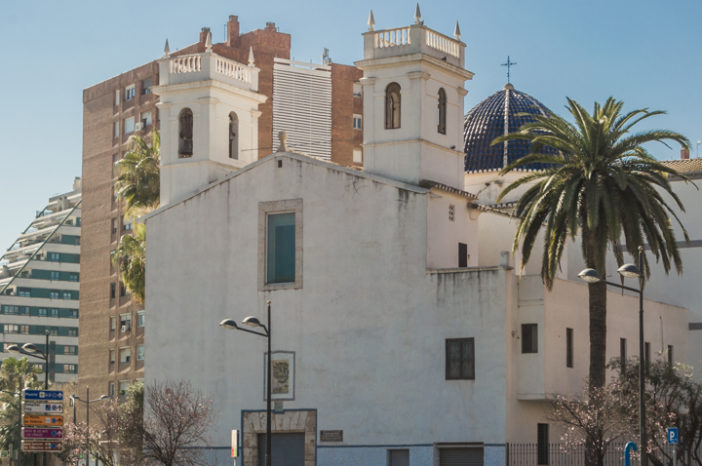Montolivet Church
It was built, between 1767 and 1771, on land occupied by the old hermitage, under the dedication of the Virgin of Montolivet, an icon of the fourteenth century of Sienese origin, of great artistic quality, which is preserved in a niche of the main altar and whose reason goes back to the foundation of the old hermitage by Benedictine monks of the abbey of Santa María de Monte Oliveto, in Siena.
The church depended on the parish of San Valero until, in 1942, it was constituted as a parish church of the district. It is a simple temple, built with masonry and tile factory, with a Latin cross floor plan and three side chapels between solid buttresses that manifest themselves on the outside. At the foot of the nave, on a low vault, is the choir, illuminated by a high rectangular window that manifests itself in the main façade. The central nave is covered with a barrel vault with lunettes and a gabled roof and, above the transept, rises a false dome of half orange on shells that on the outside manifests itself in the form of an ochavated dome with a blue glazed tile finish. Due to the damage suffered during the civil war the church is very transformed, so that all the interior decoration in plaster, imagery, furniture, altars, altarpieces and paintings are modern.
The main façade is very simple and lacks all ornament, with the exception of a ceramic altarpiece, embedded in a small niche, which is located on the lintel of the door and where the Virgin of Montolivet appears surrounded by all the popular imagination that attributes the foundation of the temple to a miracle. Behind the façade, there are two square bell towers with a balustrade finish of modern style. Attached to it, the parish offices.
The adjoining building, initially conceived as a college of priests, was confiscated and currently houses the facilities of the Fallero Museum.

Dades bàsiques
Plaza Montolivet, 3,
46004 Valencia,